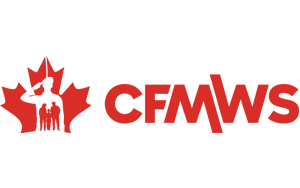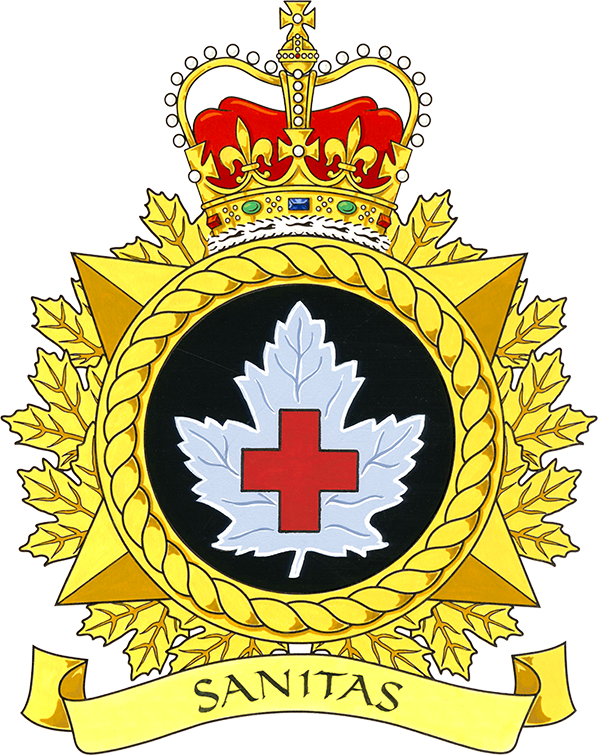Understanding Stress
Stress
Selye, H. (1956). The Stress of Life. McGraw-Hill.
Selye H (1980). The stress concept today. In I.L. Kutash & L.B. Schlesinger (Eds.) Handbook on Stress and Anxiety: Contemporary Knowledge, Theory and Treatment (pp. 127-143). Jossey-Bass.
Wear and tear
APA. (November 1, 2018). “Stress effects on the body.” https://www.apa.org/topics/stress-body
How stress impacts performance
Yerkes, R.M. & Dodson, J. D. (1908). The relationship of strength of stimulus to rapidity of habit formation. Journal of Comparative Neurology of Psychology, 18, 459-482.
Acute, episodic, and chronic stress
Colligan, TW., Higgins, EM. (2006). Workplace stress. Journal of Workplace Behavioral Health, 21:2, 89-97.
Studies on the impact of chronic stress
Mariotti A. (2015). The effects of chronic stress on health: new insights into the molecular mechanisms of brain-body communication. Future science OA, 1(3), FSO23. https://doi.org/10.4155/fso.15.21
Yaribeygi, H., et al. (2017). The impact of stress on body function: A review. EXCLI journal, 16, 1057–1072. https://doi.org/10.17179/excli2017-480
Fight, flight or freeze
Cannon W. B. (1927). The James-Lange theory of emotions: A critical examination and an alternative theory. American Journal of Psychology, 39, 106.
Cannon W. B. (1929). Bodily changes in pain, hunger, fear and rage (2nd Edition). Appleton, Century, Crofts.
Barlow D. H. (2002). Anxiety and its disorders. Guilford Press.
Perceived Stress Scale
Cohen, S., Kamarck, T., & Mermelstein, R. (1983). A global measure of perceived stress. Journal of Health and Social Behaviour, 24, 386.
Cohen, S. & Williamson, G. (date) Perceived stress in a probability sample of the United States. In S. Spacepan & S. Oskamp (Eds.), The social psychology of health. Sage.
Four key characteristics of stressful situations
Centre for Studies on Human Stress. (2019). Recipe for stress. Retrieved from: https://humanstress.ca/stress/understand-your-stress/sources-of-stress/
Stress experience sampling activity
Adapted from Csikszentmihalyi, M. (1990/2008). Flow: The Psychology of Optimal Experience. Harper Perennial.
Coping
Cohen, F., & Lazarus, R.S., (1979). Coping with the stress of illness. In C.G. Stone, F. Cohen, F., N.E. Adler (Eds), Health psychology: A handbook (217-254). Jossey-Bass.
Folkman S, & Lazarus RS. (1980) An Analysis of Coping in a Middle-Aged Community Sample. Journal of Health and Social Behavior, 21: 3, pp. 219-239
Lazarus, R.S. & Folkman, S. (1984). Stress, appraisal and coping. Springer.
Lazarus, R.S. & Folkman, S. (1987). Transactional theory and research on emotions and coping. European Journal of Personality, 1, 141-169.
COPE Inventory
Carver, CS. (1997). You want to measure coping but your protocol’s too long: Consider the brief COPE. International Journal of Behavioral Medicine, 4:1, 92-100.
Carver, C. S., Scheier, M. F., & Weintraub, J. K. (1989). Assessing coping strategies: A theoretically based approach. Journal of Personality and Social Psychology, 56, 267-283.
Military Family Life
Importance of military families (support and strength to Defence members)
Canada, Department of National Defence. (2017). Strong, Secure, Engaged: Canada’s Defence Policy. Government of Canada. More information.
Definition of families
The Vanier Institute of the Family. (2020). Definition of Family. More information.
Who are military families?
Manser, L. (2018). Profile of Military Families in Canada: 2017 Regular Force Demographics. Ottawa, ON: Canadian Forces Morale and Welfare Services. More information.
Relocations
Manser, L. (2018). Relocation Experiences. The Experiences of Military Families with Relocations Due to Postings – Survey Results. Ottawa, ON: Military Family Services, Canadian Forces Morale and Welfare Services. More information.
Mental Health et Wellbeing
Mental Health Continuum Model
Adapté de Nash, WP., et al. (2011). The stress continuum model: A military organizational approach to resilience and recovery. In Southwick, SM. Litz., BT., Charney, D., Friedman, MJ. Resilience and Mental Health: Challenges across the Lifespan. Cambridge University Press.
Family or relationship violence
MacCourt P., Family Caregivers Advisory Committee, Mental Health Commission of Canada. (2013). National Guidelines for a Comprehensive Service System to Support Family Caregivers of Adults with Mental Health Problems and Illnesses. Mental Health Commission of Canada.
Read More
Individual Resilience
Resilience
Canada, Department of National Defence. (2015). Canadian Army Integrated Performance Strategy (CAIPS) Op O 01. 4500-1. Last accessed 03 December 2020. Read More
Deep breathing
Moore, M., Brown, D., Money, N. et Bates, M. (2011). Mind-body skills for regulating the autonomic nervous system. Defense Centres of Excellence.
Peper, E. (2010). Breathing for health with biofeedback. Thought Technology Ltd.
Peper, E., et Tibbetts, V. (1997). Effortless diaphragmatic breathing. Electromyography: Applications in chronic pain, physical medicine et rehabilitation. Read More
Goal setting
Locke, E. A., et Latham, G. P. (2002). Building a practically useful theory of goal setting and task motivation: A 35-year odyssey. American Psychologist, 57, 705-717.
Visualization
Weinberg, R. S., et Gould, D. (2003). Foundations of sport et exercise psychology (3rd Ed.). Human Kinetics.
Self-talk
Beck, J. (1995). Cognitive Therapy: Basics and Beyond. Guilford Press.
Ellis, A. et MacLaren, C. (1998). Rational Emotive Behavior Therapy. Impact Publishers.
Progressive muscle relaxation
McCallie, MS., Blum, CM., Hood, CJ. (2006). Progressive muscle relaxation. Journal of Human Behaviour in the Social Environment, 13:3, 51-66.
Mindfulness
Definition:
Jha, A., Stanley, E.A., Kiyonaga, A., Wong, L., et Gelfand, L. (2010). Examining the protective effects of mindfulness training on working memory capacity and affective experience. Emotion, 10:1.
Stanley, E.A., et Jha, A. (2009) Mind fitness improving operational effectiveness and building warrior resilience. Joint Force Quarterly, 55:4.
Concept:
Jha, A., Stanley, E.A., Kiyonaga, A., Wong, L., Gelfand, L. (2010). Examining the Protective Effects of Mindfulness Training on Working Memory Capacity and Affective Experience. Emotion, 10:1.
Kabat-Zinn, J. (1990). Full Catastrophe Living: Using the Wisdom of your Body and Mind to Face Pain, Stress and Illness. Delta Trade Paperbacks
Shapiro, S.L., Carlson, L.E., Astin, J.A., Freedman, B. (2006). Mechanisms of mindfulness. Journal of Clinical Psychology, 62(2), 373-386.
Stanley, E.A., et Jha, A. (2009) Mind fitness improving operational effectiveness and building warrior resilience. Joint Force Quarterly, 55:4.
Family resilience
Family resilience
Meadows, S. et al. (2016). “Family resilience in the military. Definitions, models and policies.” Rand Health Quarterly, vol 5, no 3. Read More
Five key processes for building family resilience
Covey, S. R. (1997). The seven habits of highly effective families: Building a beautiful family culture in a turbulent world. Golden Books.
Dweck, C. S. (2006). Mindset: The new psychology of success. Random House.
Epstein, N. B. et al. (1993). The McMaster Model: View of healthy family functioning. In F. Walsh (Ed.), Normal family processes (p. 138 – 160). The Guildford Press.
Gottman, J. M. (1994). What predicts divorce? The relationship between marital processes and marital outcomes. Lawrence Elbaum Associates.
Meeks, B. S., Hendrick, S. S., et Hendrick, C. (1998). Communication, love and relationship satisfaction. Journal of Social and Personal Relationships, 15(6), 755-773.
Walsh, F. (2012). Family resilience: Strengths forged through adversity. In F. Walsh (Ed.), Normal Family Processes (4th ed. pp. 399-427). Guilford Press.
Walsh, F. (2006). Strengthening family resilience (2nd ed.). The Guildford Press.
Four key types of social support
Uchino, B. N. (2004). Social support and physical health: Understanding the health consequences of relationships. Yale University Press: New Haven, CT.
Wills, T. A. (1985). Supportive functions of interpersonal relationships. In S. Cohen et S. L. Syme (Eds.), Social support and health (p. 61–82). Academic Press.
Wills, T. A. (1991). Social support and interpersonal relationships. In M. S. Clark (Ed.), Review of personality and social psychology (Vol. 12, pp. 265–289). Thousand Oaks, CA: Sage.
Family violence
DAOD 5044-4, Family Violence

